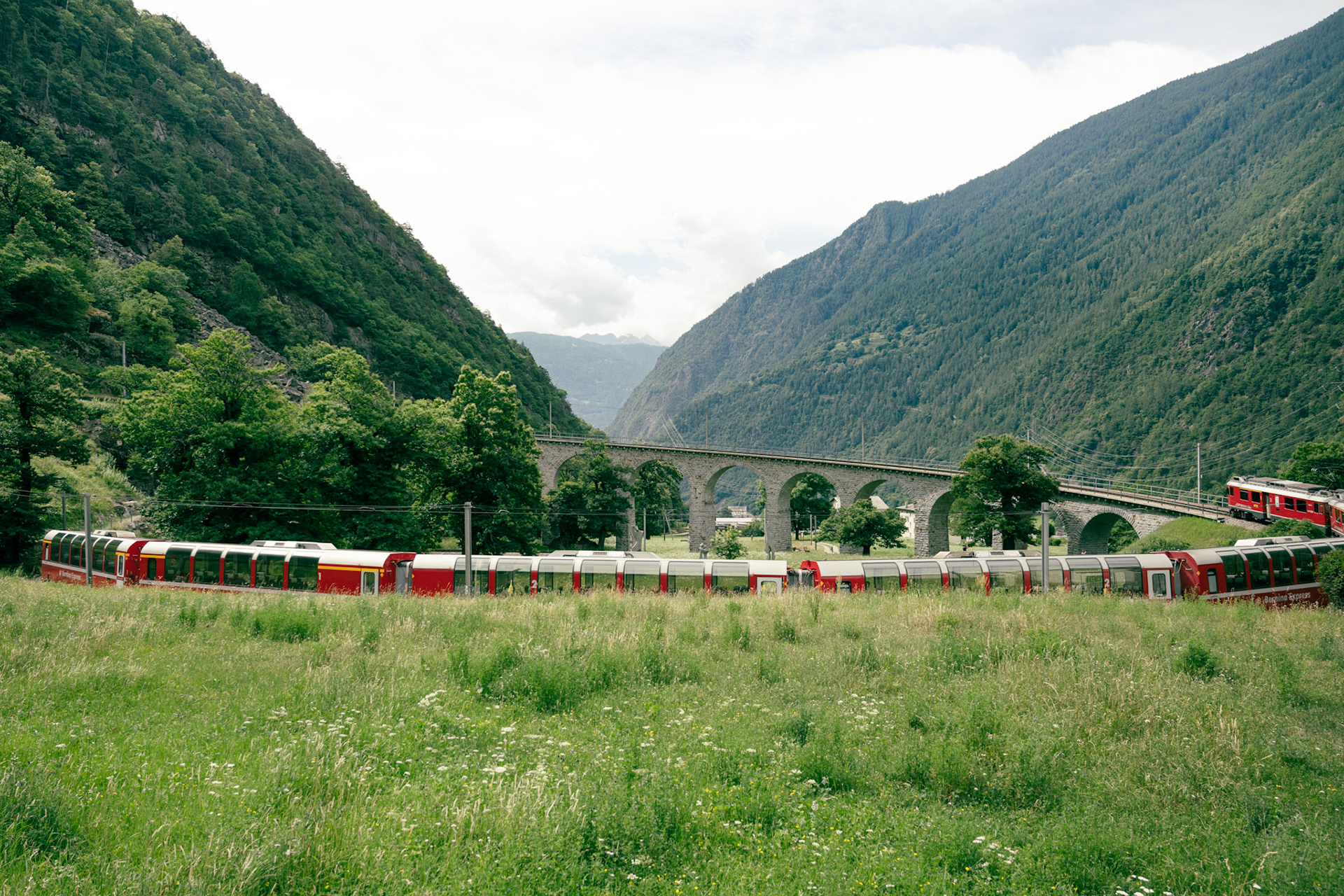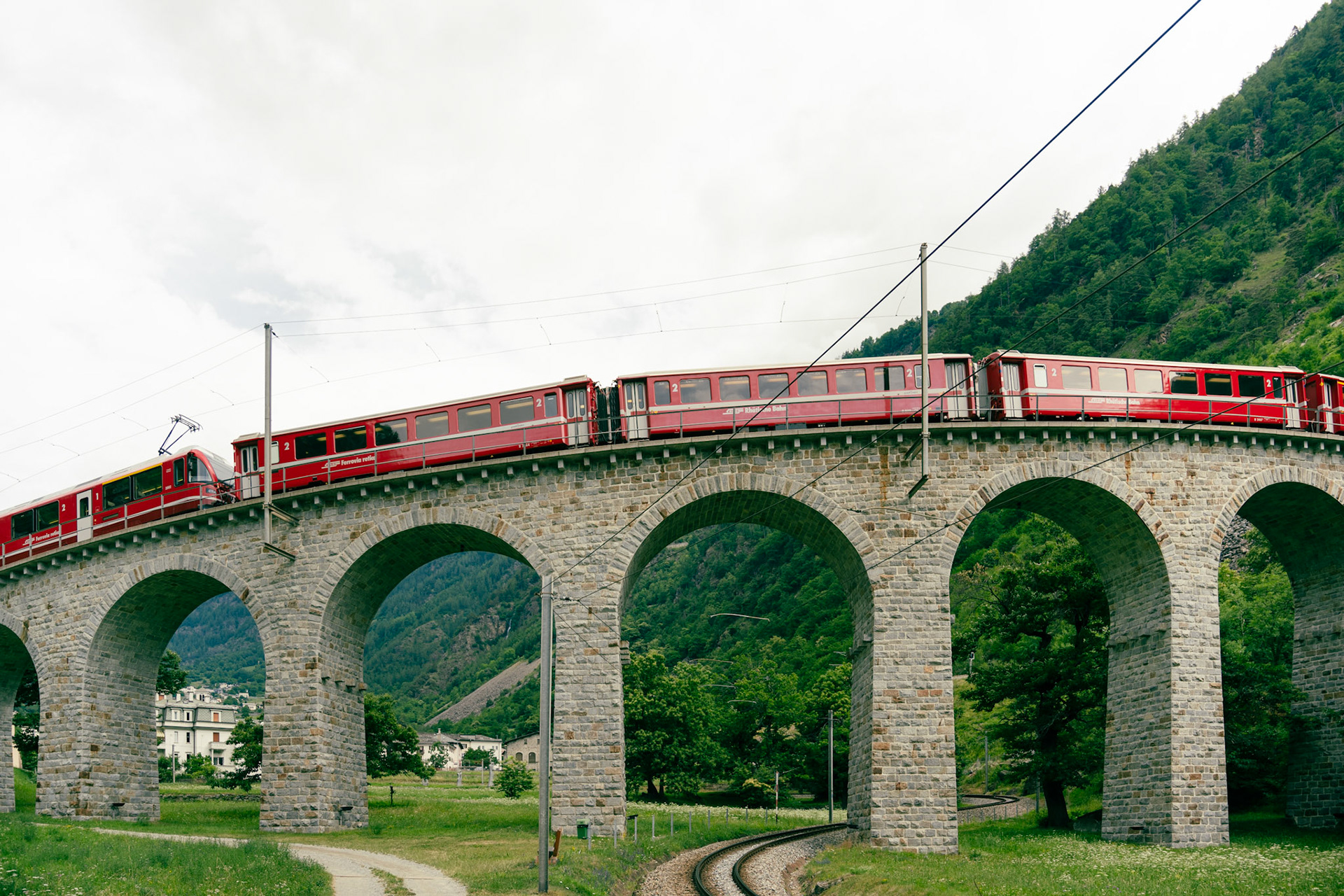The Brusio Spiral Viaduct is a remarkable piece of railway engineering located near Brusio in the canton of Graubünden, Switzerland. Part of the Bernina Railway, the highest-elevation adhesion railway route in Europe and a UNESCO World Heritage site since 2008, the viaduct is a spiral stone railway viaduct that enables trains to manage a steep elevation change in a relatively short distance.
The viaduct is a single-track, nine-arched, curved structure built from stone. It has a radius of curvature of 70 meters and a gradient of 7%. The design of the spiral allows the train to make a 360-degree turn, effectively enabling it to cross over itself. This spiral design is a solution to the steep gradient of the terrain, ensuring that the train can safely and efficiently manage the elevation change.

Brusio Spiral Viaduct
The spiral viaduct is particularly significant because it avoids the need for longer tunnels or more extensive track modifications, using a relatively small footprint to achieve a large elevation change. The viaduct’s design not only solved the technical challenges of the steep landscape but also did so in a way that was aesthetically pleasing and harmonized with the surrounding environment as its stone arches blend with the mountainous backdrop.

Brusio Spiral Viaduct

Brusio Spiral Viaduct
The Brusio Spiral Viaduct is still in regular use, serving the Bernina Express, a famous scenic train that runs from St. Moritz to Tirano. The full journey passes through 55 tunnels and over 196 bridges.

Brusio Spiral Viaduct
You may also like